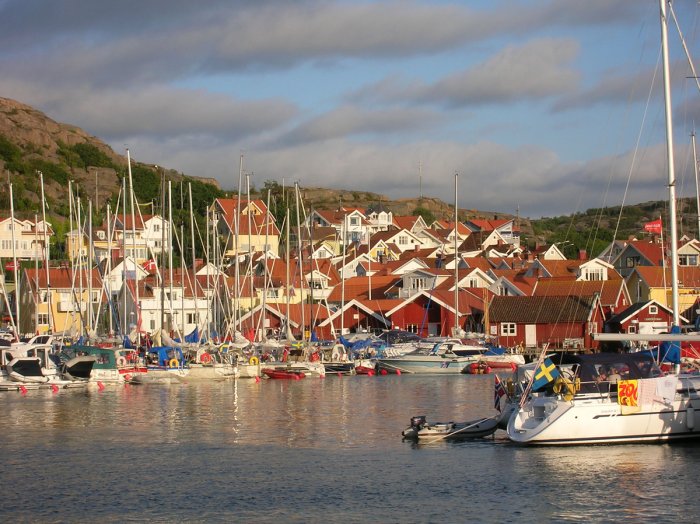Ellen Lloyd - AncientPages.com - A man digging in his garden was more than surprised when he discovered a skeleton.
A human jawbone with several teeth left turned up, and when digging deeper, the man found more skeletal parts that appeared to belong to a human.
The harbor in Hunnebostrand on the Swedish west coast. Credit: Kimblad - Public Domain
The incident occurred in Hunnebostrand, Sweden, in March this year and was initially investigated by the police as a homicide.
Swedish media now reports the skeleton dug up by the man has been buried in the ground since the Viking Age.
"I have never experienced anything like this," says coroner Peter Karan.
"We noticed that there were fractures on the skeleton that were a bit strange, transverse fractures, so we thought at first that it could be a murder," says Peter Karan, a forensic pathologist at the Medical Forensic Agency, RMV.
Experts examined the remains and could quickly determine it was not a recently deceased person.
"We understood that it was old but thought it might be from the 19th century or so", says Peter Karan.
"Analysis of a wisdom tooth showed that the skeleton belonged to a person who lived in the Viking Age, around the year 1,000," Nyheter 24 reports.
It is naturally almost impossible to say who the man was, but researchers could determine he had died at the age of 20. He was not particularly tall, no more than 160-170 cm and he was not of Nordic origin.
Det rör sig troligtvis om en man i 20-årsåldern, som var mellan 160 och 170 centimeter lång och som hade utomnordiskt ursprung.
"I could also see right away that there was an enamel deformation on the teeth, which occurs when you suffer from nutritional deficiencies when you grow up," says Clara Alfsdotter, a forensic archaeologist and osteologist at the National Forensic Center, NFC.
The nutritional deficiency can arise from starvation or from having an untreated underlying disease, for example, gluten intolerance.
"There are very few skeletons from the Viking Age in Bohuslän, so archaeologically, this is very, very exciting," says Clara Alfsdotter.
How the Vikin Age man died remains undetermined, but there is no direct evidence he had been dismembered.
According to Alfsdotter, the wounds and damage to his body occurred long after he died, probably from thawing or other pressure from the earth. During the Viking Age, it was common to either bury the individual or cremate the remains.
Parts of the back of the skull of the skeleton. Credit: Nyheter 24
"There are several examples in Sweden of monumental graves with large stones, where people were buried in very intricate ways," says Clara Alfsdotter and adds:
"It is not impossible to imagine that, for example, someone who died at sea was buried under these somewhat simpler circumstances directly on the coast."
As reported by Nyheter 24, "The skeleton has now been handed over to the Lödöse museum for further analysis. In addition, further excavations are underway in the villa garden in search of more clues.
"I have never experienced anything like this. Holding the remains of a person who lived a thousand years ago it's a breathtaking feeling," says coroner Peter Karan.
Written by Ellen Lloyd - AncientPages.com







